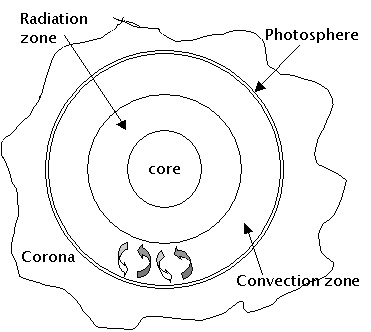
Radiation zone: energy travels outward as photons through a dense plasma, making it very hot.
Convection zone: energy is transferred toward the surface as thermal energy in circulating plasma.Photosphere: visible light is emitted at about 5800 K.
Corona: very hot gas emits x-rays (possibly because of interactions with the sun's magnetic field).